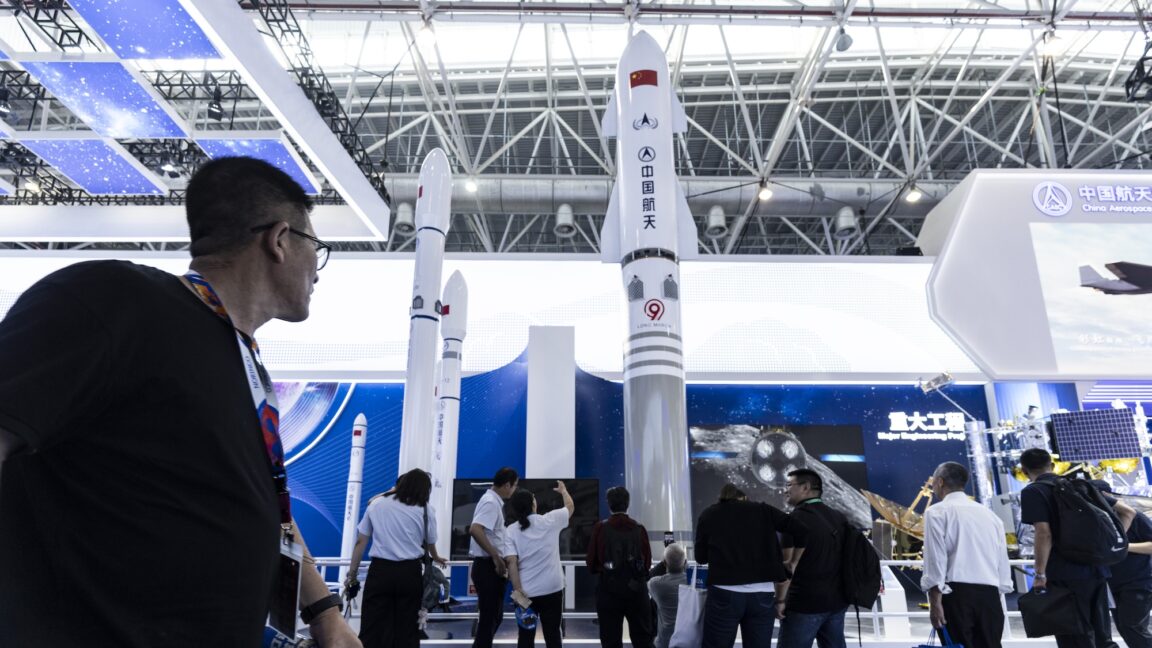
As Jonathan Roll neared completion of a master’s degree in science and technology policy at Arizona State University three years ago, he did some research into recent developments by China’s ascendant space program. He came away impressed by the country’s growing ambitions.
Now a full-time research analyst at the university, Roll was recently asked to take a deeper dive into Chinese space plans.
“I thought I had a pretty good read on this when I was finishing grad school,” Roll told Ars. “That almost everything needed to be updated, or had changed three years later, was pretty scary. On all these fronts, they’ve made pretty significant progress. They are taking all of the cues from our Western system about what’s really galvanized innovation, and they are off to the races with it.”
Roll is the co-author of a new report, titled “Redshift,” on the acceleration of China’s commercial and civil space activities, and the threat these pose to similar efforts in the United States. Published on Tuesday, the report was sponsored by the US-based Commercial Space Federation, which advocates for the country’s commercial space industry. It is a sobering read, and comes as China not only projects to land humans on the lunar surface before the US can return, but is advancing across several spaceflight fronts to challenge America.
“The trend line is unmistakable,” the report states. “China is not only racing to catch up—it is setting pace, deregulating, and, at times, redefining what leadership looks like on and above Earth. This new space race will not be won with a single breakthrough or headline achievement, but with sustained commitment, clear-eyed vigilance, and a willingness to adapt over decades.”
Progress on a number of fronts
The Chinese government made a key decision in 2014, known as “Document 60,” that allowed native companies to license government technology, and for private capital to be used to build civilian space infrastructure. In return, private companies and academics must share new technology with the military when so ordered.
The report makes a number of key findings about growth over the last decade:
Annual investment in Chinese commercial space activity has grown from $164 million in 2016 to $2.86 billion last year.
China now has six operational spaceports and is scaling up its ground systems to rival SpaceX and other international launch competitors.
More than a dozen private launch companies, many building medium lift vehicles akin to the Falcon 9, have raised more than $3 billion since 2020.
China’s “Silk Road” initiative has led to more than 80 space projects abroad in satellite manufacturing, ground stations, data sharing, and more, thereby eroding US influence.
The Tiangong space station is poised to take over as the world’s primary hub for activity in low-Earth orbit after the International Space Station is retired in 2030.
Unlike NASA’s perpetually delayed Artemis Program, China continues to hit milestones on its roadmap for lunar and Mars exploration.
China has developed regional hubs in Shanghai, Beijing, Chengdu, Xi’an, Guangzhou, Jinan, and elsewhere to bring academic, government, and private researchers together.
“The key takeaway here is that there is an acceleration,” said Dave Cavossa, president of the Commercial Spaceflight Federation. “The United States is still ahead today in a lot of areas in space. But the Chinese are advancing very quickly, and poised to overtake us in the next five to 10 years if we don’t do something.”
The report was sponsored by the commercial space advocacy group, but it is hard to argue with the premise that a lot of the key areas in which the United States remains ahead of China are due to developments by private space companies. Without SpaceX, the number of Chinese launches annually would dwarf activity in the United States, for example. And this extends to other areas of space, including remote sensing and low-Earth orbit telecommunications.
Can the US remain ahead?
Cavossa said to maintain an advantage over China, the United States needs to lean into its strengths—namely the commercial space sector in which private capital and ideas are mingling to produce new advances and push economic activity further into space.
An executive order signed in August, Enabling Competition in the Commercial Space Industry, was a positive step by the Trump administration, Cavossa said. It aims to streamline launch licensing and regulation.
“There’s other things along the lines of budget battles,” Cavossa said. “We don’t want to see the US government scaling back its reliance on commercial satellite communications. We don’t want to see them scaling back commercial remote sensing data buys, which is what they’ve been doing, or at least threatening to do. We want to make sure that there’s a seamless transition from the ISS to commercial LEO destinations, and then a transition away from old programs of record to commercial transportation alternatives. That’s what the US government can do and Congress can do here in the next couple of years to make sure that we stay ahead.”
The bottom line, Cavossa said, is that now represents the last possible opportunity for the United States to make investments that will allow the country’s space industry to remain ahead of China. If not, China will soon reach parity and potentially move ahead, hence the decision to name the report after the wavelength shift of light for objects accelerating away.



